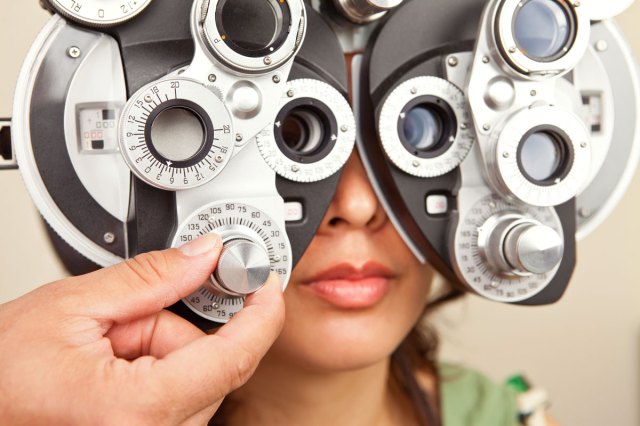There’s no two ways around it: Our eyes worsen with age. Typically, adults start having problems reading or looking at the computer beginning in their early to mid-40s, progressing over time. This normal change in eye focus and age-related farsightedness is called presbyopia. According to the Vision Council, 13.2% of Americans wear over-the-counter reading glasses — which are essentially magnifying glasses to help focus on close distances.
While wearing glasses is often an obvious sign of aging, it is natural and should be embraced. (Take it from someone who’s worn reading glasses since 13.) If you’re not sure if you’re a candidate for readers — or are already struggling to read this article — here are five signs to look out for and some guidance on how to choose the right pair.
All featured products and deals are selected independently and objectively by the author. Better Report may receive a share of sales via affiliate links in content.

Reading Materials Look Blurry
Do you find yourself squinting to read a menu at a restaurant, a text message, or the newspaper? People often squint to focus on things that appear blurry, both near and far. For people with farsightedness, this is especially true in a dimly lit room.

Your Eyes Hurt When Doing Close Work
The strain from doing things such as reading, playing a game on your phone, sewing, and other close-up hobbies may cause eye irritation. If you often rub your eyes when doing these kinds of activities, it may be a sign that you need readers. Also, there are cosmetic repercussions — rubbing your eyes too much may lead to bloodshot eyes and dark under-eye circles.

You Get Headaches When Reading
Getting headaches is a classic sign that you may have eye issues. If you experience headaches after reading or staring at the computer for long periods, it may be a sign that it’s time for readers to help you focus.
Reader Favorites

You Want to Nap
Eye strain is exhausting. When you have presbyopia, the lens of your eyes don’t focus correctly, leaving the other parts of your eyes to overcompensate. That strain can make you feel tired. Combine that fatigue with hours spent looking at a computer, and it’s the perfect recipe for craving a mid-workday nap.

You’re Holding Things Further Away
The more presbyopia progresses, the more you may find yourself holding things further away from your eyes to focus. This may be a sign that it’s time to invest in a pair of readers — your arms can only go so far, you know?

How to Choose the Right Pair
Readers come in all shapes and sizes. The strength of reading glasses is measured in diopters and goes from +0.75 to over +4.00 in increments of 0.25. The best way to know if you need reading glasses and what prescription is to get an eye exam from an optometrist. If you can’t make it to a doctor, reading glasses strength charts are available online. But remember, they will only provide guidance and are not an official prescription.
Once you know your prescription, it’s time to take the plunge. There are several kinds of readers available, tailored for different needs. Basic readers are for people who are only farsighted (but can be worn on top of contacts). Progressive readers are for people who are both nearsighted and farsighted and regularly wear glasses. For those who need readers for the outdoors, you can also buy basic and progressive sunglass readers.
Featured Image Credit: Hispanolistic/ iStock
More From Our Network
Better Report is part of Inbox Studio, which publishes content that uplifts, informs, and inspires.

















